What kind of animals can swim?
Swimming is a fun way to exercise and stay fit. But did you know that some animals can actually swim? Learn more about these amazing creatures below.
Did you know that penguins can swim? Or that dolphins can even jump out of water?
Table of Contents
Animals That Can Swim :
Camel

Camels are known for their ability to survive in extreme conditions. They even live in deserts where they drink salt water. Can camels swim?
Camels are large mammals native to North Africa and Asia. They belong to the camel family (Camelidae) along with bactrian camels, dromedary camels, llamas, alpacas, guanacos, and vicuñas. The word camel comes from Arabic kamal, meaning hump or bag.
Camels are able to swim because they have webbed feet. Their legs and hooves are adapted to swimming. Camels also have a special membrane called the udder that helps them breathe underwater.
Pig
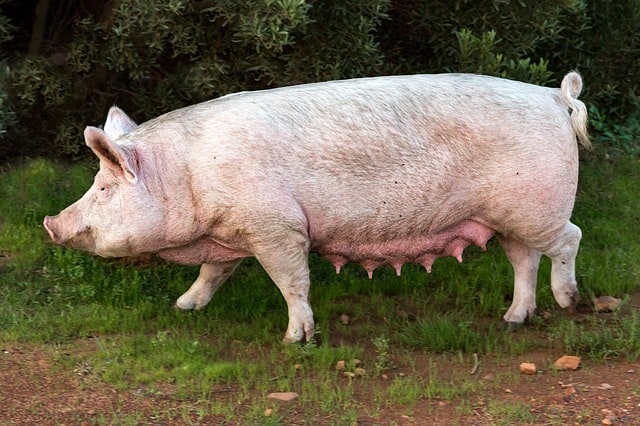
Pigs are known for their ability to jump over obstacles.
Pigs are omnivores and eat plants and animals. They are also very intelligent and can even communicate using sounds and gestures. In fact, pigs can recognize human faces and respond to them.
Pigs can swim well enough to stay afloat in water for short periods of time.
Chimpanzee

Chimps are known for their intelligence, but they also have some unique abilities.
Can chimps really swim?
Chimps are primates native to Africa. They are found in the wild in parts of Central and West Africa, and are often kept as pets or in zoos. The average chimpanzee weighs around 100 pounds (45 kg) and has a life expectancy of 50 years.
While chimpanzees are generally considered to be land animals, they can swim well enough to stay afloat. In fact, chimps can even dive underwater for long periods of time. Their ability to survive in water comes from their large lungs, which allow them to breathe underwater.
Crocodiles
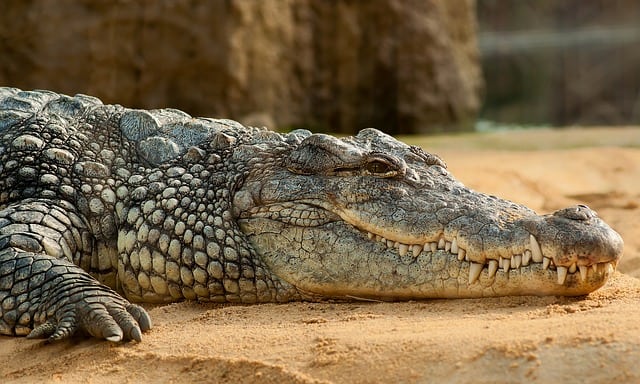
Crocodiles are known for their stealthy hunting style. They lurk in the water waiting for prey to come close before pouncing.
Carcharodon carcharias (the scientific name for crocodile) is a large species of saltwater crocodile native to Southeast Asia. This animal has a long history of being hunted for its meat and skin.
It turns out that crocodiles can indeed swim. In fact, they are one of the only animals capable of true aquatic locomotion. Although crocodilians are generally thought of as land creatures, they are also able to move around in the water using their powerful tails.
Wolves

You might have seen wolves swimming in the water before. They seem to enjoy the experience and even jump out of the water to catch fish.
But did you know that they are actually good swimmers?
In fact, wolves are excellent swimmers and divers. They can stay underwater for 30 seconds or longer. Their ability to dive has been observed in nature and also in captivity. While some animals can stay underwater for long periods of time, other species cannot.
Read More : Animals With Feathers !
Jellyfish
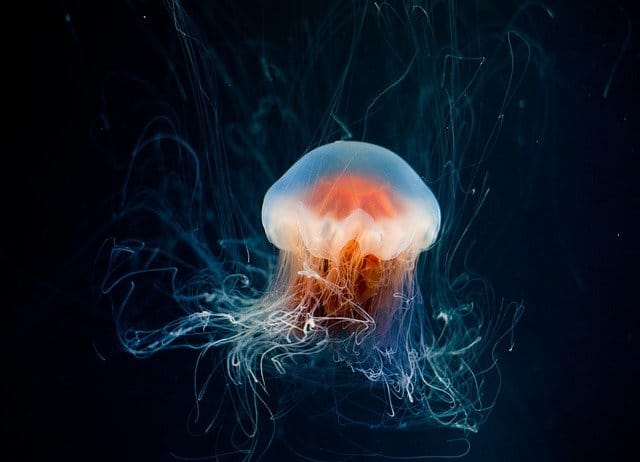
Jellyfish are fascinating creatures. They look like floating orbs, but they actually move around using their tentacles.
Jellyfish are often confused with sea anemones because of their similarity in appearance. Sea anemones are also known as sea spiders because of their long, thin bodies. These animals are usually found in tropical waters.
Jellyfish don’t really swim. Instead, they propel themselves forward using their bellows, which are located at the base of each tentacle. The bellows expand and contract rhythmically, pushing water out from behind the animal and propelling it forward.
Seals

People often ask me whether seals can swim or not. I always tell them yes because they are mammals and they have lungs. But then I realized that seals don’t really breathe air. They take oxygen from water through their skin. That’s why they look like they float on top of the water.
Seals aren’t true fish, but rather aquatic mammals. In fact, they belong to the order Carnivora, along with dogs, cats, bears, tigers, wolves, etc. They are also known as pinnipeds (a group of marine carnivores that includes sea lions, walruses, and otters).
There are several misconceptions about seals. For example, they are not able to walk on land. Their eyesight is much worse than ours, and they cannot see colors.
Bison
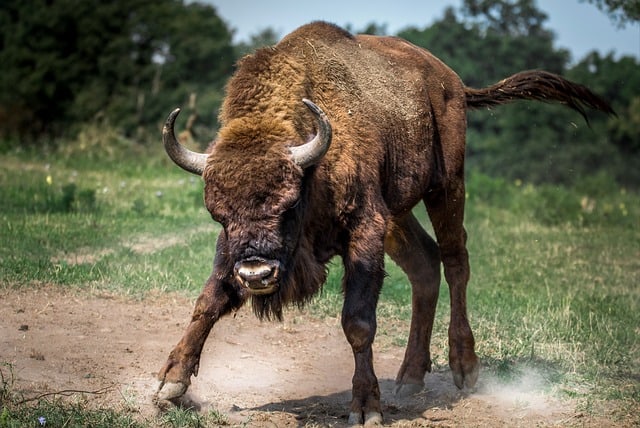
Have you ever wondered whether a bison can swim? Well, the answer is yes, they can. Of course, the bison is also known as buffalo or water buffalo. This large herbivore has adapted well to life on land. In fact, bisons are quite good swimmers.
The bison is a member of the Bovidae family. They are the largest living species of wild cattle native to North America. These animals can live up to 20 years.
Bison are omnivores, meaning they eat both plants and meat. They graze on grasses during the day and browse on woody vegetation at night.
Elephant

Did you ever wonder whether an elephant can swim or not? The answer is yes, they can! They are even capable of jumping out of water and landing safely on land.
Elephants are large mammals belonging to the order Proboscidea. They are known for their intelligence, curiosity, strength, and ability to communicate.
Elephants are able to survive in both fresh and saltwater. They can also live in areas where temperatures range from 0°C (32°F) to 45°C (113°F). Their body temperature ranges between 36°C (96°F) and 40°C (104°F).
Manatees
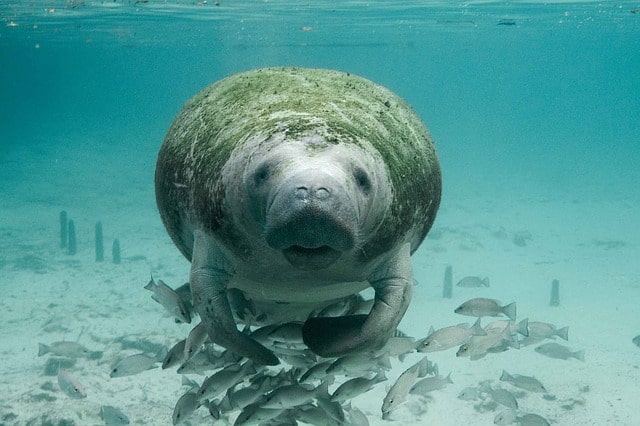
Manatees are large aquatic mammals found in tropical waters around the globe. They are known for their slow, graceful movements and gentle nature. Can they really swim?
Manatees are herbivores and spend much of their time underwater. Their bodies are adapted to living in warm water, so they don’t require air to breathe. They also have webbed feet and flippers instead of legs.
They are capable of moving through the water at speeds of up to 3 mph (5 km/h). They can even move backwards using their tail.
great white shark

Sharks are some of nature’s most awe-inspiring creatures. They are known for their size, speed, strength, and intelligence. Some species even have the ability to change color. Can they really swim?
Sharks are members of the order Chondrichthyes, which means cartilaginous fish. This group also includes rays, skates, and chimaeras (which look like sharks). Most sharks are carnivores, feeding primarily on other fish, although some species eat invertebrates or even other sharks.
Most sharks can move through water using their fins. The pectoral fin helps them steer, while the pelvic fin acts as a rudder. In addition, the tail fin provides propulsion. As long as a shark has enough oxygen, it can swim at speeds of up to 30 miles per hour.
Komodo dragon
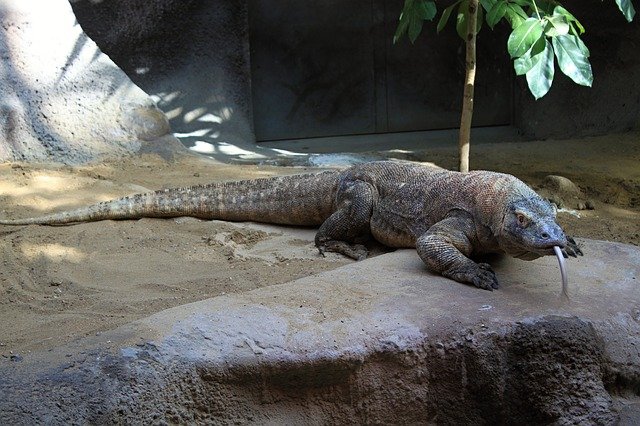
Komodo dragons are large lizards native to Indonesia. They can live up to 30 years and weigh up to 200 pounds.
The Komodo Dragon has become a symbol of Indonesia and its wildlife. They are known for their aggressive nature and they are also considered to be one of the largest lizards in the world.
They can climb trees and swim in water. This makes them perfect for zoos and aquariums around the world.
Coyotes

Coyotes are known for their ability to swim across large bodies of water. Can they also dive into shallow water?
Coyotes are well adapted to living in arid environments where food is scarce. They spend much of their time hunting or scavenging for food. Their adaptations include having a thick layer of fur to insulate them from cold temperatures and short legs for running over long distances.
Coyotes are often seen swimming across rivers and lakes, but they can also swim through shallow water. They can even dive into water up to 15cm deep.
Capybaras

Capybara is a large South American rodent that has become famous for its ability to swim. Capybaras spend their days swimming around lakes and rivers, and they even enjoy a dip in the ocean. The question is, can they really swim?
Capybaras are found throughout Latin America. They are considered a pest because they eat crops and destroy property. In addition, they are known to carry rabies.
Capybaras are able to swim because of their elongated bodies. Their long legs allow them to propel themselves through water. If you want to see for yourself, check out our video below.
Muskrats
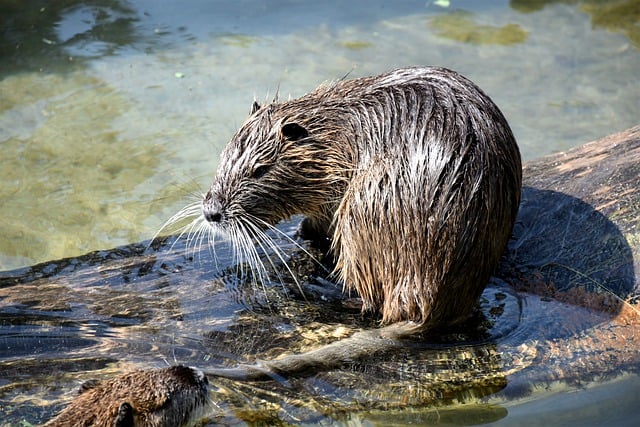
Muskrats are rodents that live in North America. They look similar to rats, but they are much smaller. They are also known for their ability to swim. Can you guess why?
Muskrats are often found near water sources such as rivers or ponds. This makes them excellent swimmers because they don’t require air to breathe.
They use their tails to propel themselves through the water. Their tail is covered in hairs called vibrissae (which means ‘whiskers’). These hairs act like tiny sails, helping them move through the water.
Rabbits

Rabbits can swim, but they don’t usually enjoy water sports. They prefer to stay dry and cozy in their burrows or huts. If you want to see a real aquatic animal, try visiting a zoo.
Aquatic mammals include seals, otters, penguins, dolphins, whales, manatees, and even sea turtles. In fact, some species of dolphin can live in both saltwater and freshwater.
Even though rabbits are considered land animals, they are also capable of swimming. Rabbits have webbed feet and toes that allow them to walk on land and swim in water. They can move through water using their front legs and tail.
echidnas

Echidna is a mammal from Australia that looks like a cross between a hedgehog and a spiny anteater. They are excellent swimmers and can even dive underwater for long periods of time.
Echidna is a nocturnal animal that spends its days sleeping and hiding underground. This makes them very vulnerable to predators such as foxes and feral cats.
This creature has evolved special adaptations to survive in water. Their webbed feet allow them to move through the mud easily, and their tail helps propel them forward.
blacktip reef shark

Blacktip Reef Sharks are some of the largest sharks in the ocean. They can reach lengths of over 20 feet (6 m) and weigh more than 2,500 pounds (1,100 kg). These amazing creatures spend their entire lives in the open sea, where they hunt for food. Can they swim?
Blacktip Reef Sharks are found off the coast of Australia and New Zealand. They live in warm waters and feed mostly on fish and squid.
Blacktip Reef Shark can swim, but only for short distances. Their fins are designed to move them through the water, but they cannot propel themselves forward. Instead, they rely on their powerful tail muscles to push them along.
Rhino

Can Rhinos Swim? Yes they can. They can even swim through water. The question is, Can Rhinos Survive In Water?
Rhinos are large mammals native to Africa. They are herbivores and are known for their thick skin, long horns, and big ears. They are also very good swimmers.
They can survive in water for around 30 minutes. This means that they can stay underwater for longer periods of time. They are able to breathe underwater and they can also take in oxygen from the air.
Moose

Can you believe that moose can swim? Well, they can! And they do it quite well too. These large animals spend their days swimming around lakes and rivers, where they graze on grasses and aquatic plants.
Moose are herbivores who eat mostly vegetation. They live in North America, Europe, Asia and Africa. In addition, they are found throughout Canada and Alaska.
Moose are very agile swimmers. Their long legs allow them to move through water at speeds of up to five miles per hour. They also have webbed feet, allowing them to walk on land or float along the surface of the water.
Cat

Can cats really swim? If you’ve ever seen a cat playfully jump into water, you might think they can. But can cats really swim?
Cats are naturally good swimmers. They can even dive underwater to catch fish. And some cats can even stay underwater for several minutes without drowning.
Cats are born with the ability to swim. Their tails provide propulsion, allowing them to move forward through the water. The paws also act as paddles, helping them propel themselves through the water.
Shrews

Did you know that sharks can swim? And yes, they can! Shrews are small mammals found throughout the world. They live in burrows or under logs and rocks. They eat insects, worms, seeds, fruits, and berries. Shrews are also known as insectivores because they feed mostly on insects.
Shrews are very agile animals. They have a long tail that helps propel them through water. Their bodies are covered with short fur, which keeps them warm during cold weather.
Shrews are mammals native to Europe and Asia. They are known for their ability to dig tunnels through soil or sand. They also have a unique way of breathing underwater.
They are able to breathe air and water simultaneously. This allows them to stay submerged for long periods of time without drowning.
Hedgehogs

Hedgehogs are known for their ability to roll into a ball and sleep through the cold winter months. But they also have another trick up their sleeve – swimming. Can these little guys really swim?
Hedgehogs are nocturnal animals that spend much of their time sleeping during the day. They are found throughout Europe and Asia and are often kept as pets because of their cute appearance.
Yes, hedgehogs can swim. In fact, they are very good swimmers. Their long legs allow them to move easily through water. And since hedgehogs don’t have fur or feathers, they don’t get wet.
Sloth

The Sloth has long been considered a symbol of laziness and lack of ambition. But recent studies suggest that they might actually be smarter than other mammals.
Sloths are known for being lazy, but they aren’t completely useless. In fact, they can survive in water for short periods of time. This means that they can swim if necessary.
manta rays
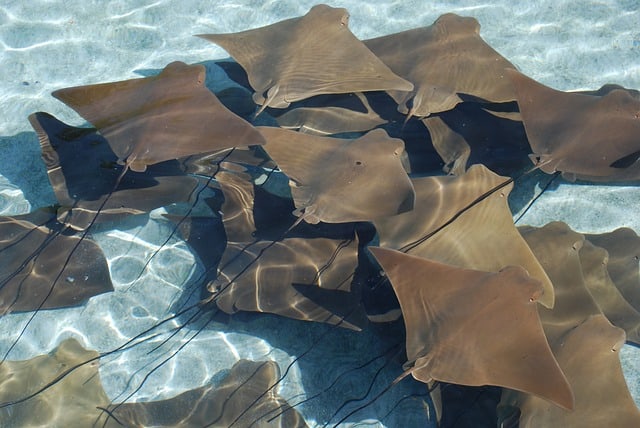
Manta rays are some of the largest fish in the ocean. They live in warm tropical waters where they feed on plankton. Can these gentle giants really swim?
Manta rays are found in warm oceans around the globe. They spend their lives swimming slowly through the water column feeding on tiny organisms such as krill. These creatures are often mistaken for sharks because of their large size and similar shape.
Manta rays are thought to be able to move forward at speeds of up to 2 mph (3 km/h). This makes them slow swimmers compared to other fish species. However, they are capable of moving backwards and sideways, allowing them to change direction unexpectedly.
Aardvark

Aardvarks are known for their ability to climb trees and burrow into the ground. They also love water and can even dive under the surface to catch fish. Can they really swim?
Aardvarks are herbivores and spend much of their time digging underground or climbing trees. They are nocturnal animals and sleep during the day. They are found across Africa and parts of Asia.
Aardvarks can move through water, but only at very slow speeds. They can stay underwater for short periods of time, but cannot swim continuously for long distances. Their front legs are webbed and they have large claws on their feet.
Armadillo

Armadillos are native to North America. They live primarily in Texas and Mexico, where they spend their days digging holes in the ground. But did you know that armadillos can also swim?
Armadillos are nocturnal animals who spend the day sleeping underground. In the evening, however, they emerge from their burrows to feed on insects and other small creatures.
Armadillos have a unique ability to move through water. This allows them to travel long distances across rivers and streams. Some scientists believe that armadillos evolved this ability because they needed to cross bodies of water to reach food sources.
Snake

Snakes are known for their ability to climb trees, but they also love water. They can even survive in water for long periods of time. Can snakes swim?
Snakes are reptiles that belong to the order Squamata (Greek for scaled). There are over 3,500 species of snakes worldwide. Most of them live in tropical areas, although some species inhabit temperate regions too.
Yes, snakes can swim. In fact, some species can even dive into deep water. The ability to swim comes from the presence of scales on the skin. These scales act as air bladders and allow the snake to move through the water without sinking.
Read More : Do Snakes Have Backbones !
Ostrich

Ostriches are known for their ability to walk through water without sinking or drowning. They can even stand upright in shallow water. Can they also swim?
The ostrich is a large bird native to Africa. Ostriches are herbivores and feed mainly on grasses. They spend much of their time standing on dry land, but they can also move around in water.
Ostriches can survive in water because they have webbed feet. Their toes are covered with skin and hair called keratin, which helps them stay afloat. This unique structure allows them to walk on top of the water surface.
Porcupine

Porcupines are known for their quills, but they also have a unique ability to swim. How does this happen? What other animals can swim?
Porcupines are arboreal mammals native to North America. They live in colonies and feed on insects and berries. Their quills are hollow and filled with barbs. These spiky hairs are used for defense against predators.
Porcupines have evolved a special adaptation to allow them to swim. The quills act as flippers, allowing them to move through water without sinking. Other animals such as otters and penguins can also swim using similar adaptations.
Whale Sharks

Whale sharks are known for their massive size and impressive swimming abilities. Can they really move around at such speeds?
Whale sharks (Rhincodon typus) are large fish found in tropical waters around the globe. They can reach lengths of 12 meters or more and weigh over 2 tons. Their name comes from their long snout, which resembles the shape of a whale’s tail.
Whale sharks are very slow swimmers, moving only at 0.1 mph (0.2 km/h). The fastest recorded speed was 6.6 mph (10.4 km/h), which is faster than a human running at 4mph (6km/h).
Iguanas
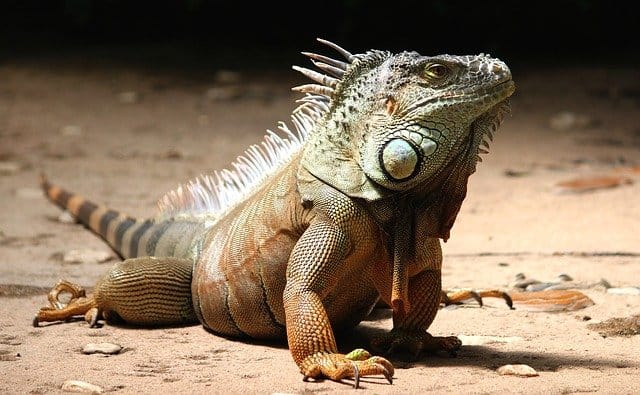
Iguanas are known for their ability to survive in extreme conditions. Can they also swim?
The iguana (or lizard) is a large, herbivorous reptile native to Central America and South America. They are often mistaken for lizards due to their similar appearance.
They are able to move through water using their tail as a rudder. This allows them to escape predators or reach food sources.
Tigers
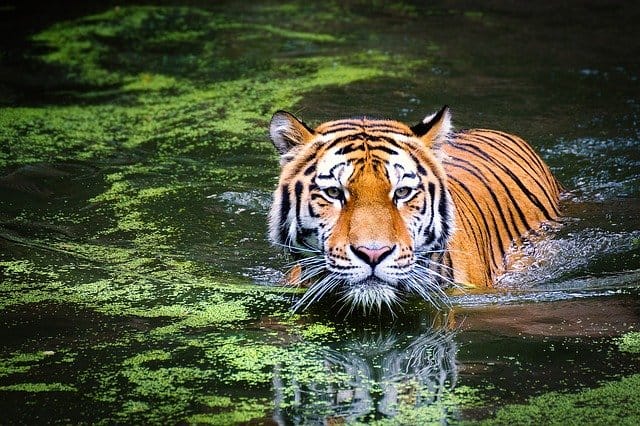
Tigers are one of the largest cats in the world. They are also known for their ability to swim long distances underwater. Can they really swim?
Tigers are able to hunt fish underwater. They use their powerful legs and paws to propel themselves through the water.
They can dive down to depths of 100 meters (328 feet) or more, but they don’t stay submerged for very long. Their lungs are large enough to allow them to breathe air at these depths, but they cannot survive without oxygen for longer periods of time.
Penguins
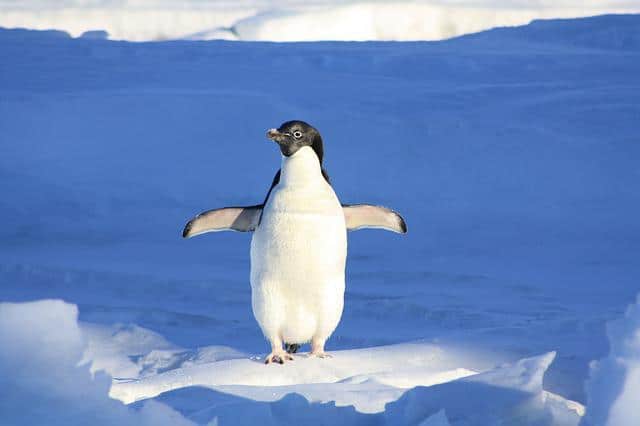
Penguins are well known for their ability to dive underwater and fly through the air, but they are also masters at swimming. Can penguins swim?
If you’ve ever watched a penguin in action, you’ll notice that they rarely go into the water. They prefer to stay dry and warm on land. However, some penguins spend time in the ocean, especially during winter months.
Cheetahs

Can cheetahs really swim? The answer is yes. They can swim very well. In fact, they are considered to be the fastest land animal.
Cheetah is a large cat species native to Africa. These cats can run at speeds reaching 70 miles per hour (113 km/h). Their speed is comparable to that of some birds.
They can swim quite well. Researchers have found that cheetahs can reach speeds of up to 45 mph (72 kph). This makes them the fastest land animals.
hamster

Hamsters love water, but they don’t seem to enjoy swimming. Can they really swim?
Hamsters are rodents native to Europe and Asia. They live in burrows and eat insects. They also love to play and climb. In fact, they are very social animals and often form groups called colonies.
They are able to swim because their bodies are covered in fur. Their tails act as oars and propel them through the water. What kind of hamster can swim? Golden hamsters are good swimmers because they have webbed feet. Dwarf hamsters don’t have webbed feet, so they cannot swim well.
Llamas

Did you know that llamas are the animals that can survive in water? They also have very strong legs and hooves, which makes them great swimmers.
Although they don’t usually live in lakes or rivers, llamas can swim across large bodies of water because their thick coats prevent them from sinking. In fact, they can even jump out of the water and climb back onto land.
